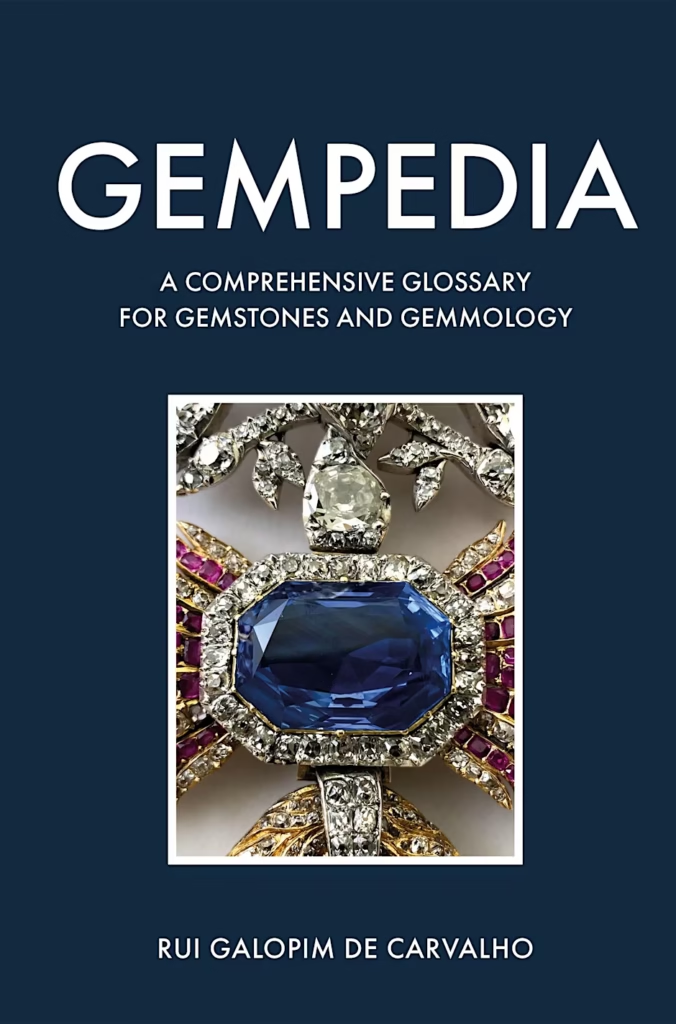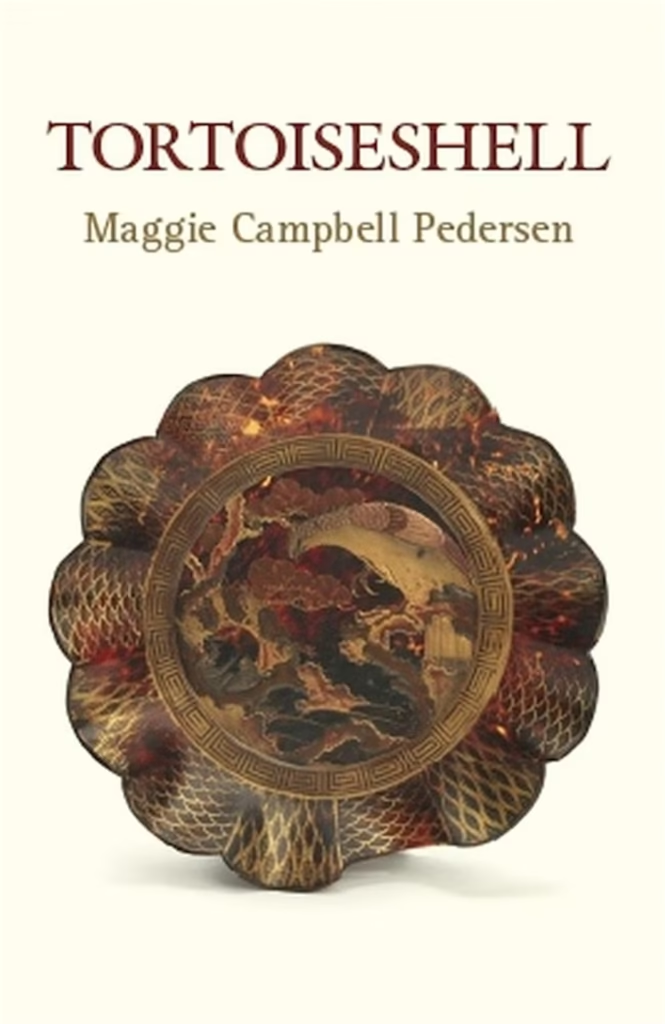
This article by Guy Lalous ACAM EG summarises a study on the gemmological and physical properties of brown zircon from the Central Highlands of Vietnam, together with its chemical composition, Raman, Fourier Transform Infrared Spectroscopy (FTIR) and Ultraviolet Visible Near InfraRed (UV-Vis-NIR) spectroscopic features.
Zircon, zirconium silicate (ZrSiO4) crystallises in the tetragonal system and has a high refractive index (RI), high dispersion, and subadamantine lustre. Zircon can be found in igneous, metamorphic and sedimentary rocks and is particularly common in plutonic rocks.

Vietnamese zircon in a variety of colours and prismatic crystal shape. Image courtesy of L. T. T. Huong. Scale bar = 2 cm
Are there different types of zircon?
Zircon crystals possess a range of optical and physical properties and can be classified in three types: high, intermediate and low. Zircon is quite unique in this regard. High zircon possesses the full crystal structure, there is little or no damage from radioactive elements. In intermediate zircon the radioactive elements have caused some structural damage and the physical and optical properties are in between low and high. The crystal structure of low zircon has been altered by thousands of years of irradiation from its own trace elements with extensive crystal-structure damage as a result. The optical and physical properties of the latter are lower.
What are rare earth elements?
Rare earth elements (REEs) are a group of 17 metals, comprising of the lanthanide series of elements, in addition to scandium and yttrium, which show similar physical and chemical properties to the lanthanides. The REEs have unique metallurgical, magnetic and luminescent properties. Luminescent properties are useful in gemstone determination.
Read more: Getting to Grips with GemTof Technology
The original rock type of individual zircon grains can be reliably distinguished by taking a multivariate statistical approach, using a range of trace elements including at least hafnium, uranium, thorium, yttrium and the Heavy-REEs.
What is metamictisation?
Metamictisation of natural zircon results from accumulated radiation damage to the crystal structure caused by radioactive decay of trace amounts of urnaium and thorium, substituting for zircon. The most striking effect of metamictisation is the destruction of anisotropy.
What is the origin of colour in zircon?
In general, the colouration of zircon is affected by its trace-element composition (e.g. transition metals and REEs) and also by radiation damage (e.g. radiation-induced colour centres). Hafnium as well as radioactive elements such as U4+ and Th4+ can substitute Zr4+ in dodecahedral coordination. The resulting radiation damage to the structure results in metamict zircon. The reddish brown colour of Ratanakiri (Cambodian) zircon is thought to be due to the defect center caused by irradiation of uranium and thorium, commonly present as trace elements in its structure.

Rough samples of Vietnamese zircon studied in the report. Divided into four colour groups: very light brown; orangey brown, reddish brown and dark reddish brown. Image courtesy of N. T. M. Thuyet.
Gemmological and physical properties of the Vietnamese zircons:
- Rough
- Prismatic
- Orangey brown to dark reddish brown in colour
- Translucent to transparent crystals
- Weak-to-distinct pleochroism.
- Hydrostatic specific gravity (SG) range from 4.10-4.60.
- Samples were inert to UV radiation
The transparent near-colourless to light-coloured samples showed typical REE-related spectroscopic features. UV-Vis-NIR of the reddish brown zircons showed a continuous increase in absorption toward the UV region, in particular between 400 and 600 nm with a shoulder at around 500 nm. The very light brown and orangey brown have a shoulder of very low intensity.
Microscopic observation of the Vietnamese zircons revealed straight and angular growth zoning. The following inclusions were identified: apatite, hematite, red iron hydroxide and ilmenite. Rare inclusions of baddeleyite, tourmaline and jadeite were reported in a previous study.
What about Raman spectroscopy and crystallinity of zircons?
The process of metamictisation of zircon greatly influences its Raman spectrum. The crystallinity of zircons can be measured as increasing irregularities of bond-lengths, bond-angles and a general breaking-up of the structure result in changes in wavenumbers and widths of the Raman bands. Full width at half maximum is the width of the Raman spectrum curve measured between those points on the y-axis, which are half the maximum amplitude.
Raman spectra of the Vietnamese zircons showed dominant peaks at 1008; 975; 437; 392; 355; 225; 214 and 202 cm–1. The strongest bands in the 450-350 cm–1 range and around 1000 cm–1 are due to internal vibrations of silicon oxide (SiO4) tetrahedra. The most intense intra-tetrahedral vibrational band at 1008 cm–1, is best suited to quantify the degree of metamictisation. Crystalline (high-type) zircon shows a full width at half maximum (FWHM) value of 30 cm–1. The Raman data of Vietnamese zircon have FWHM values in the 2-3 cm–1.
Read more: Reconstructed Amber Broken Down
FTIR spectra displayed three sharp, intense bands in the 1100-400 cm–1 range at 854; 609 and 430 cm-1. The intense band around 854 cm–1 (and shoulder at 970 cm-1) is due to internal stretching vibrations of SiO4 tetrahedra; this band weakens and broadens in metamict zircon. The band at 609 cm–1 (due to internal bending vibrations of SiO4 tetrahedra) and the band at 430 cm-1 (due to the external or lattice vibration mode) may also weaken and broaden with metamictisation, and they are nearly absent from highly metamict samples. FTIR spectroscopy of the Vietnamese zircon confirms the results of the Raman spectra showing that the samples are well crystallised.
The average chemical composition of the zircons show low contents of non-formula elements. The most abundant chemical substitution was halfnium. The total REE-oxide concentrations were 0.03-0.08 wt%. All the samples contained low amounts of thorium and uranium, and the Th:U ratios are consistent with a magmatic origin (and subsequent transport to the earth’s surface in alkali basalts). Raman and FTIR spectroscopy indicate that the zircons are high type (highly crystalline).
Read more: Exploring the Wonders of Myanmar
Heat treatment of the Vietnamese zircon under oxidising conditions produced a lighter but unstable brownish orange colour in the range of 200-500 °C and a stable pale brown colour after heating to 600 °C, whereas treatment under reducing conditions yielded a blue colour after heating to 800-1000 °C. The zircons turn blue as the small concentration of uranium within the atomic structure undergoes a change in charge. The treated blue colour was stable.

Reddish brown Vietnamese zircon is shown before (top) and after (bottom) heat treatment. Image courtesy of L. T. T. Huong.
Zircon from the Central Highlands of Vietnam has similar properties and heat-treatment behaviours to those of zircon from Ratanakiri. ■
This is a summary of an article that originally appeared in The Journal of Gemmology titled ‘Geology, Gemmological Properties and Preliminary Heat Treatment of Gem-Quality Zircon from the Central Highlands of Vietnam’ by Le Thi-Thu Huong, Bui Sinh Vuong, Nguyen Thi Minh Thuyet, Nguyen Ngoc Khoi, Somruedee Satitkune, Bhuwadol Wanthanachaisaeng, Wolfgang Hofmeister, Tobias Häger and Christoph Hauzenberger 2016/Volume 35/ No. 4 pp. 308-318
Interested in finding out more about gemmology? Sign-up to one of Gem-A’s courses or workshops.
If you would like to subscribe to Gems&Jewellery and The Journal of Gemmology please visit Membership.
Cover image Vietnamese zircon with an internal feature of opaque hematite and red iron hydroxide (magnified 20x). Image courtesy of N. T. M Thuyet and L. T. T. Huong.
{module Blog Articles Widget}


